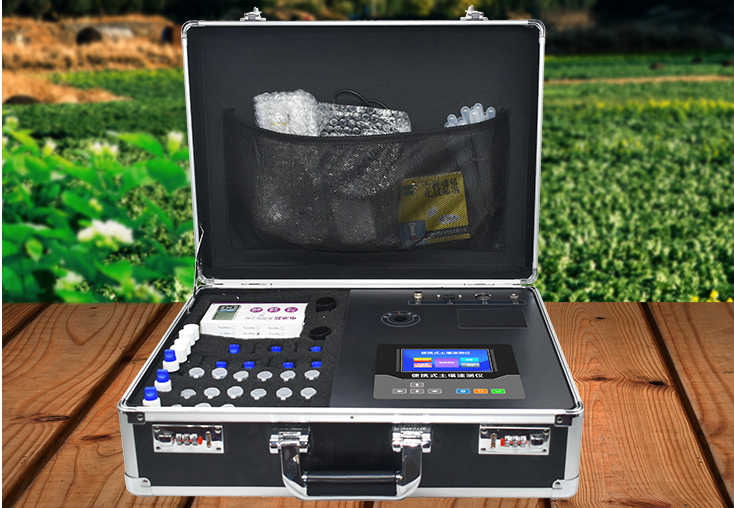Soil health is a critical aspect of sustainable agriculture. Healthy soil provides a conducive environment for plant growth, supports biodiversity, and promotes ecosystem services like nutrient cycling and carbon sequestration. In recent years, there has been an increasing focus on soil health and its role in agricultural sustainability. Soil sensors have emerged as powerful tools in this endeavor, enabling real-time monitoring and analysis of soil conditions. This article aims to explore the applications of soil sensors in sustainable agriculture and their role in unlocking the secrets of soil health.

Understanding Soil Sensors:
Soil sensors are electronic devices designed to measure and monitor soil characteristics. They employ different sensing techniques such as capacitance, resistance, and reflectance spectroscopy to capture soil information and convert their presence into measurable electrical signals. Soil sensors can measure various parameters such as moisture content, temperature, pH, nutrient levels, and organic matter content. By continuously monitoring these parameters, soil sensors help assess soil health, identify potential issues, and enable the implementation of targeted management practices.
Applications of Soil Sensors in Sustainable Agriculture:
Precision Agriculture:
Precision agriculture involves the use of data-driven decision-making to optimize crop productivity and minimize environmental impact. Soil sensors play a critical role in precision agriculture by providing real-time information on soil conditions. This information enables farmers to make informed decisions about irrigation, nutrient management, and pest control, which can enhance crop yields while reducing inputs.
Water Management:
Water is a critical resource in agriculture, and efficient water management is essential for sustainable agriculture. Soil sensors can provide accurate information on soil moisture content, allowing farmers to optimize irrigation scheduling and avoid over or under-watering. This reduces water waste and improves water-use efficiency, contributing to both economic and environmental sustainability.
Nutrient Management:
Soil sensors can provide real-time information on nutrient levels in the soil, enabling farmers to apply fertilizers more accurately and efficiently. This reduces fertilizer waste, minimizes nutrient runoff, and promotes soil health by minimizing the risk of over-fertilization.
Soil Health Assessment:
Soil sensors can provide valuable information on soil health indicators such as organic matter content, pH, and nutrient levels. By continuously monitoring these indicators, soil sensors help assess soil health, identify potential issues, and enable the implementation of management practices to promote soil health.
Advancements in Soil Sensor Technology:
Significant advancements have been made in soil sensor technology, enhancing their accuracy, sensitivity, and reliability. Some notable advancements include:
Wireless Sensor Networks:
Wireless sensor networks enable remote monitoring of soil conditions, allowing for real-time data collection and analysis. This enhances the efficiency of soil management practices, reduces labor costs, and enables targeted interventions.
Miniaturization:
Soil sensors have become smaller in size, leading to the development of portable and wearable monitoring devices. This enables non-destructive soil sampling, reducing disturbance to soil structure and biodiversity.
Data Analytics:
Advancements in data analytics enable the integration of soil sensor data with other data sources like weather data, crop growth models, and satellite imagery. This facilitates more comprehensive and precise analysis of soil conditions and enables data-driven decision-making.
Challenges and Future Outlook:
While soil sensors have shown tremendous potential in sustainable agriculture, certain challenges need to be addressed. Calibration issues, sensor drift, and the need for standardized protocols and data sharing are among the challenges faced by soil sensor technology.
Looking ahead, the future of soil sensors in sustainable agriculture looks promising. Further advancements in sensor technology, data analytics, and artificial intelligence are expected to enhance sensor performance, enabling more comprehensive and precise monitoring. The integration of soil sensors with emerging technologies like drones and satellites could provide valuable insights into soil health dynamics on a larger scale.

Conclusion:
Soil sensors have emerged as indispensable tools in unlocking the secrets of soil health and promoting sustainable agriculture. Their ability to provide real-time, accurate data on soil conditions has revolutionized our understanding of soil health and its role in agriculture sustainability. With continuous advancements in soil sensor technology, we can expect a future where data-driven decision-making, targeted management practices, and healthy soils become the
